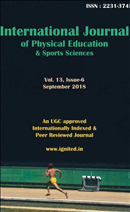A Comparison of Women’s Body Composition in Rural and Urban Areas The Impact of Age on Women's Body Composition in Rural and Urban Areas
Main Article Content
Authors
Abstract
Women from an urban and rural are compared in terms of body composition and fat distribution. Those in attendance Women were recruited via the media and the community as a convenience sample. Main outcome indicators Weight, height, waist and hip circumferences, visceral fat area, body fat (kg and percent), and skeletal muscle mass are all taken into consideration. Conclusions The average age of the overall sample (n = 254) was 28.0 (7.6) years, and 53 percent of them lived in an urban region. Rural women's average age was much greater than urban women's. The majority of women (66.5) had a BMI in the healthy range (18.5–24.9 kg m2), and there was no statistically significant difference in mean BMI between rural and urban women. Rural populations had considerably larger central fat distribution, waist circumference, and waist-to-hip ratio measurements. Rural women had a much larger visceral fat area. Differences in waist circumference, waist-to-hip ratio, and visceral fat area were no longer statistically significant once age was taken into account. last thoughts While there were no statistically significant variations in body composition between urban and rural women, these findings underscore the considerable impact of age on central adiposity measurements. To better understand changes in body composition among women in their 20s and 30s, population monitoring should include measurements of excess central adiposity, especially visceral fat area.
Downloads
Download data is not yet available.
Article Details
Section
Articles

